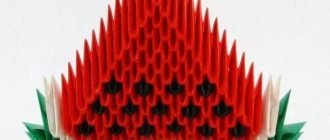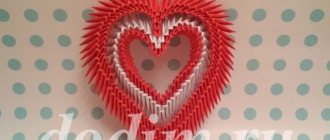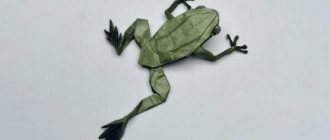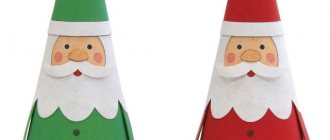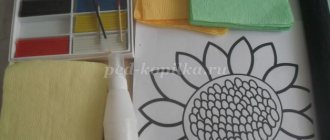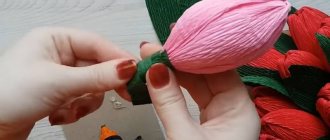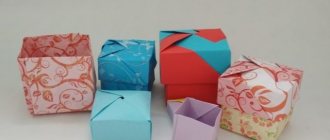Needlework
06/26/2018 Anastasia Prozheva
Having seen products made in the form of carved lace from plain paper, you would never say that such beauty is not difficult to create with your own hands. Anyone can master openwork paper cutting, diagrams of which are also provided. This type of needlework is also called paper graphics, silhouette cutting, but the essence is the same, it is always a solid cut-out design on a plain background. There are two main directions: cutting with a knife and scissors. For beginners, creating paper patterns will require great patience, perseverance and desire.
This interesting technique can be used not only to create postcards and panels, but also to decorate the interior. Products are usually made from white or black paper, but other shades will look good. Openwork paper cutting can be either flat or voluminous. So, using the silhouette cutting technique, you can make such fabulous things: window decorations, snowflakes, cards, napkins and much more.
What materials and tools will you need to master openwork paper cutting? In fact, nothing special or expensive is needed. You will need:
- printed diagrams (invented independently or ready-made);
- sheets of white (or other) colors;
- breadboard (stationery) knife;
- a tablet, a regular board or a piece of thick cardboard on which you will cut;
- nail scissors.
As you can see, you will need regular office stationery.
Let's consider a master class on openwork paper cutting, which will help you master this interesting art.
When all the tools and materials are prepared, you can begin work. Most often, patterns are cut out on a sheet of paper that is folded in a certain way. Almost everyone cut out intricately patterned New Year's snowflakes in childhood. But in this way you can still make a frame for a mirror or a napkin for a table. A napkin or frame made like the one in the photo below will look very nice:
Related article: Crochet chameleon. Amigurumi knitting patterns
Step-by-step description of the work:
- Take a sheet of white paper and fold it.
- Using tracing paper, we transfer the outline of the pattern onto the base, tracing it twice.
- Cut out the pattern with scissors or a knife.
- Unfold the product very carefully and iron the folds through another sheet.
- We place the openwork napkin on colored cardboard or paper and glue it. Make sure that the glue does not leave any traces.
- If desired, you can laminate the product to make it last longer.
Decor ideas
This interesting technique can be used to make postcards, panels, and interior decoration. The products are usually made from white or black paper, but other shades also look great. The interesting thing is that they do not only flat things. Volumetric openwork paper cutting looks very impressive. Schemes for such objects are also presented in the form of a contour drawing on a flat sheet, which is then folded along certain lines and glued into a three-dimensional part. So, using the silhouette cutting technique you can do the following:
- Postcards.
- Snowflakes.
- Window decorations.
- Napkins for the table.
- Volumetric decor based on a flat product or an assembled three-dimensional paper structure.
Having mastered simple options, you will be able to make fabulously beautiful things.
Materials and tools
You will need the following to master openwork paper cutting:
- Diagrams and a printer to print them.
- Sheets of white (or other) color.
- Dummy knife.
- The base on which you will cut (a special tablet, a regular board or a piece of thick cardboard).
- Small manicure scissors as an alternative to a knife or an addition to it.
The rest is optional and depends on how you will use the blanks:
- Glue onto a colored base - decorative cardboard and glue.
- Hang them on the Christmas tree or in the space of the room - pendants (threads).
- Decorate the window with regular or double-sided tape.
In fact, nothing complicated, special or expensive is needed. Regular office stationery. The main thing is patience, perseverance and the desire to make a masterpiece with your own hands.
Openwork paper cutting: diagrams, master class
Traditionally, patterns are created by cutting out part of the design on a sheet of paper folded in a specific sequence. One of the most common and familiar products is snowflakes, but they are not the only ones you can make. A napkin or mirror frame made according to the following pattern will look very impressive.
Work like this:
- Take a piece of white paper and fold it.
- Attach the printed design to the tracing paper and trace the outline twice to first draw it on the tracing paper and then transfer it onto the prepared base, or cut out a blank part of the pattern as a stencil and trace.
- Cut out the pattern with sharp scissors.
- Unfold the product.
- Iron the folds through the other sheet. You can smooth it out with a regular spoon.
- Place the openwork napkin on colored cardboard or paper. Apply carefully with a non-staining compound.
- Laminate the product. This way it will last longer and preserve its pristine beauty.
I remember, I'm proud...
Great victory of 1945! Everyone associates May 9 with unbearable pain, great loss and pride for their heroes. From childhood we are told about them, because thanks to our grandfathers and great-grandfathers we live on this earth. On Victory Day we need to honor the memory. Invite your child to make a card in the style of openwork cutting. And we will help you with this.
Necessary materials:
- a sheet of white paper;
- watercolor or gouache paints;
- brushes;
- felt-tip pens or markers;
- glue;
- red paper;
- scissors and a stationery knife.
Openwork paper cutting: New Year's patterns
To decorate the interior with elements of this technique, you can make various decorations using ready-made templates. Print them to the required scale (usually the blanks are designed for a standard A4 landscape sheet), cut out the pattern. There are a lot of preparations on the Internet, both directly festive and just winter themed.
- Christmas balls.
- Christmas trees.
- Houses.
- Snowmen.
- Entire landscapes and lacy plot scenes.
Start with simple diagrams.
Having mastered the principle and trained your hand, move on to more complex multi-object compositions.
The art of making templates, stencils and letters for cutting paper
The art of openwork paper cutting using ready-made templates and stencils has come to us from time immemorial. Japanese and Chinese craftswomen, using special templates and patterns, could create the finest paper lace. In Slavic culture, this type of needlework was called “vytynanka” - from the Belarusian word “vytynat”, that is, “to cut out”. Vytynanka is the art of cutting out patterns, letters and numbers from paper using pre-prepared stencils. The ancient Slavs often decorated their homes with patterns and paper napkins. Vytynanki were considered a talisman that brought happiness to the house.
Contents of the material
Silhouette paper cutting
In order to master the art of artistic paper cutting, a novice master must first select a suitable stencil. There are a huge number of patterns for vytynanka on the Internet, you just need to choose the one that suits you and print it out. For the first experiments, regular A4 size office paper is suitable. The main thing is that it is not too thin. Those who are good at drawing can make templates for the vytnanka themselves.
The main tool for a novice craftsman is an ordinary stationery knife. Typically, a knife is used to cut through the smallest details, for example, in elegant paper napkins. If the template made from paper does not contain small parts, you can do without a knife and work with sharpened nail scissors. It is recommended to start working with the largest details of the image, gradually moving to smaller ones.
Experienced craftsmen create entire narrative paintings from paper. For beginners, it is best to start with the simplest work: cutting out letters and numbers from paper using a ready-made stencil. Stencils can be found on the Internet or made yourself. This artistically executed inscription will serve as an original decoration for the holiday. For example, you can cut out a beautiful inscription “Happy New Year!” using a template. or "March 8".
Openwork paper cutting, diagrams
When performing the protrusion, you need to work strictly according to the stencil and carefully ensure that the knife does not go beyond the lines of the drawn template. Vytynanka requires perseverance and patience. Having gained experience with simple templates, you can move on to creating more complex works. Instead of ready-made stencils, you can come up with your own; the main thing is to think in advance which parts of the image will be cut out and which will remain on the sheet of paper.
For beginning craftsmen, a wide variety of vytynanka patterns are available on the Internet. The following stories are the most popular:
- Stencils for New Year's decorations: openwork Christmas trees and paper Christmas balls, images of Santa Claus, winter landscapes, familiar snowflakes from childhood. This work will perfectly decorate the window on New Year's holiday and help create a festive atmosphere.
- Easter motifs: images of Easter bunnies and chickens, as well as openwork Easter eggs.
- Postcards using the vytynanka technique, dedicated to various calendar holidays (March 8, February 23, Valentine's Day). Making a holiday card using this technique is a great idea for joint creativity with your children.
- Images of animals and birds.
- Images of flowers. Several floral motifs can be combined into one card, which will be an original gift for family and friends.
- Landscapes using the vytynanka technique. Landscapes can be either simple (for example, a house and a tree) scenes or complex paintings with an abundance of details.
Tips for beginners
In order for your first acquaintance with vytynanka to be successful, you must consider the following recommendations:
- It is better for beginning craftswomen to use ready-made patterns with a minimum of small details; as they master the technique, they can move on to more complex paintings.
- Curved lines are the most difficult to cut, so for beginners it is better to choose templates without curves. To cut wavy lines, it is recommended to use scissors with rounded ends.
- It is best to cut out the smallest details with a knife or blade, placing a sheet of paper on the table. Be sure to place a piece of cardboard under the template so as not to cut the table while working with a knife.
- Works using the vytynanka technique look impressive if they are framed or matted.
- The finished protrusion can be carefully glued onto a piece of colored cardboard, and it will look different, much more interesting.
Having gained experience in making two-dimensional openwork paintings from paper, you can move on to cutting out three-dimensional compositions. Cutting out three-dimensional pictures from paper is called “kirigami”. The pattern for kirigami looks like this: the outline of the design, lines for cutting, and fold lines are marked on a sheet of paper. After cutting out all the details, the drawing must be bent in accordance with the diagram, and you will get an original three-dimensional composition. This technique is often used to make greeting cards.
We also recommend reading:
Vytynanka is an original and interesting type of needlework. The main thing is patience, and everything will work out!
Vytynankas and templates for vytynanki
Attention, TODAY only!
1igolka.com
How to make beautiful snowflakes
One of the most traditional and favorite ways to decorate a room for the New Year is to decorate with paper snowflakes. They are usually glued to windows, cabinet doors, and walls. Some people make garlands of them, hang them on threads or place them on the Christmas tree.
To make beautiful openwork snowflakes from paper, it is better to take ready-made patterns for cutting.
The main thing is to correctly fold the sheet of paper to apply the template. Any snowflake consists of a pattern repeating around its circumference. There are blanks for 1/6 and 1/12 parts. The second option with a narrower sector is obtained by additionally folding the workpiece for 1/6 of the part. You can fold the part on the basis of an already cut circle or any sheet that is first cut to a square and then folded or, conversely, the folds are made first, and then the shape of a sector of the circle is cut out.
So, you have learned in more detail what openwork paper cutting is. You can take ready-made diagrams for any product or use your imagination and develop your own exclusive item. Get creative. Create beautiful decor with your own hands.
What kinds of snowflakes are there?
Many peoples live in harsh and snowy winters. Throughout the long winter, a person is surrounded by beautiful snowflakes. And he admires them with surprise.
Man has always had and still has a desire to imitate natural patterns. Namely, the ornament of ice crystals.
Most often, the desire to cut snowflakes from paper arises around the New Year.
If earlier patterns were cut out of birch bark, now they are cut out of paper. I'll call them fluffies. This is a synonym for the word "snowflake".
Snowflakes ornament
Ornamental motifs predominate in such products. In which you will notice repetition and alternation of constituent elements.
The ornament can be complex or completely simple. You can invent it or take one that already exists somewhere and apply it. So, it's all up to you.
Very often, ornaments do not require preliminary elaboration of all the details. The drawing and diagram are invented even as the cutting process progresses.
Snowflakes likeness
This category includes fluffs created in the model and likeness of real snowflakes.
That is, those that fall from the sky.
To make such similarities, you will have to know the classification of natural fluff.
And also look at them very carefully.
Catch the pattern in each beautiful snowflake and transfer it to paper.
Snowflakes silhouettes
The fluffs of this category are decorated with plot compositions and resemble silhouette graphics.
And I would say that they resemble a fairy tale. And sometimes. even leaves or a beautiful flower.
These are the most complex in execution and the most picturesque schemes and templates.
In this case, a plot is invented and drawn on a piece of paper.
In this case, it is desirable that its outer contour resembles a natural snowflake.
